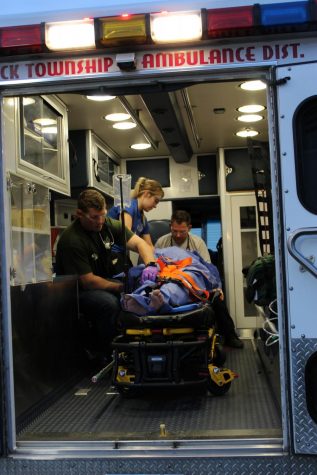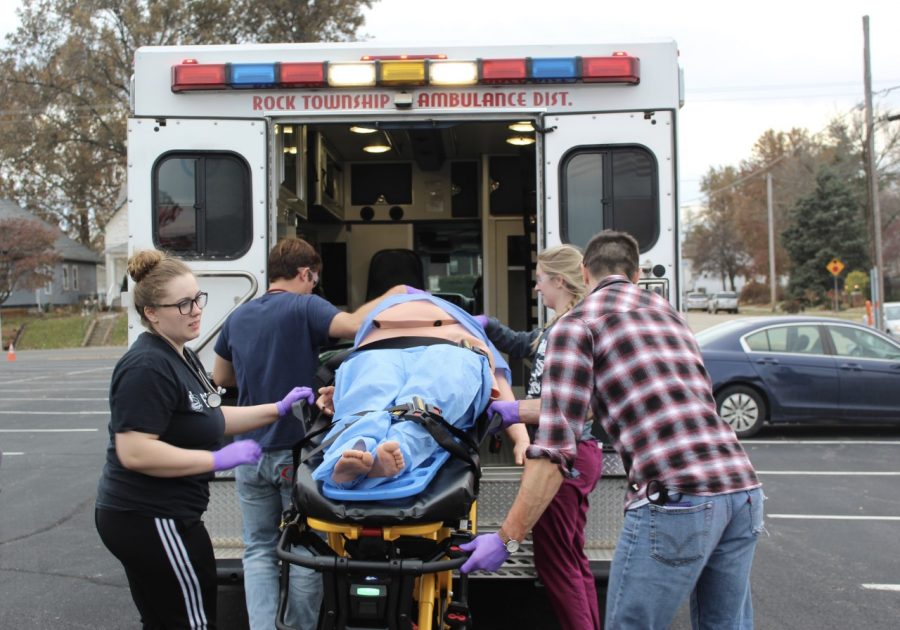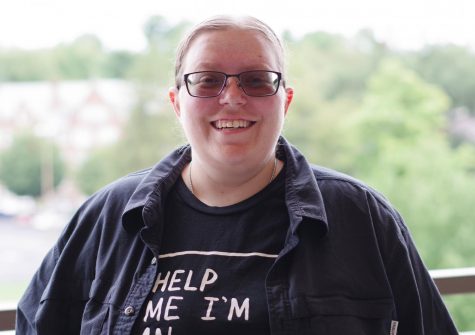Real experience, real intensity: Students spend 3 days simulating emergency calls
Photo by Mia Tebbe
Lindenwood paramedic students lift a fake car accident victim into an ambulance in under 10 minutes during their Trauma Lanes simulation.
November 30, 2019
Fake blood and vomit on the grass, shouts from afar, less than 10 minutes to get off a scene: These were all part of the high-stress situations Lindenwood paramedicine students experienced for three days last week running through simulated 911 calls with real ambulances.
The simulations, known as Trauma Lanes, focus on bringing stress to paramedicine students through realistic, immersive training.
This helps students better prepare for physiological and psychological stress they will experience in the field when providing patient care under intense pressures.
Paramedicine students are broken into five different call scenario groups with four students per group. Over the course of the three days, they completed about 120 immersive simulation calls, one call an hour for eight hours each day.
The students and instructors hovered around their patient, represented by a lifelike training mannequin, assessing the accident and the patient’s situation. The calls simulated life-threatening emergencies such as gunshot wounds, drowning, long falls, or car accidents.
After assessing the patient and determining the best medical procedures, students were expected to lift the patient onto a stretcher, safely securing the mannequin and hoisting it into the ambulance to be transported to the emergency room. Students were expected to do this correctly and within 10 minutes.
Another aspect of Trauma Lanes was yelling and shouting, which came from paramedicine professors overseeing the simulated call. This helped train students for reality by triggering responses, like increased adrenaline, which students are expected to learn how to overcome.
“When they get adrenaline flowing, then there’s physiological responses, like loss of fine motor control, inability to recall memory; it’s a little flustering and all that skill goes off the memory, so three days of getting them used to this, causes desensitization and over-training […] so when it’s mom or dad screaming about their kid […] they’re used to it,” Paramedicine Program Director Nick Miller said.
The students used three in-service ambulances in their learning experience. The vehicles came from Lincoln County, Missouri, Rock Township Ambulance District in Jefferson County, Missouri, and St. Clair County, Illinois. Miller said these ambulances have all of the real equipment paramedics use.

Lindenwood paramedic students assess the patient in the ambulance while transporting them to the emergency room.
And real experience is crucial, because in the real world, patients “really die, then [paramedics] get PTSD and all that stuff because no one ever prepared them for the reality of what happens,” he said.
Brock Fisher, a senior paramedicine major, agreed that Trauma Lanes helps students prepare to handle intense situations in the real world.
“It’s important to participate in Trauma Lanes because in real life you are going to be tired, you are going to be mentally and physically exhausted,” he said. “What I learned during Trauma Lanes was an idea of what to expect during calls and knowing how to push forward and treat the patient just like how I would want one of my loved ones to be treated.”
According to Miller, the training pays off. He said professors hear from hospitals and ambulance stations that Lindenwood paramedicine students are better prepared than anyone else.












